- Home
- Part 1 Introduction, Quality
- Part 1. Introduction
- Part 1.2. Quality Management and Examination Quality Standards
- Part 1.3. Practice Change Procedure
- Part 2 General Filing Requirements
- Part 2. Landing Page
- Part 2.1. How a document is filed
- Part 2.2. Filing of Documents - requirements as to form
- Part 2.3. Non-compliance with filing requirements
- Part 2.4. Filing Process (excluding filing of applications for registration)
- Part 3 Filing Requirements for a Trade Mark Application
- Part 3. Relevant Legislation
- Part 3.1. Who may apply?
- Part 3.2. Form of the application
- Part 3.3. Information required in the application
- Part 3.4. When is an application taken to have been filed?
- Part 3.5. The minimum filing requirements
- Part 3.6. Consequences of non compliance with minimum filing requirements
- Part 3.7. Other filing requirements
- Part 3.8. Fees
- Part 3.9. Process procedures for non payment or underpayment of the appropriate fee
- Part 3.10. Process procedures for the filing of a trade mark application
- Part 4 Fees
- Relevant Legislation
- 1. Fees - general
- 2. Circumstances in which fees are refunded or waived
- 3. Procedures for dealing with "fee" correspondence
- 4. Underpayments
- 5. Refunds and or waivers
- 6. No fee paid
- 7. Electronic transfers
- 8. Disputed credit card payments/Dishonoured cheques
- Part 5 Data Capture and Indexing
- Part 6 Expedited Examination
- Part 7 Withdrawal of Applications, Notices and Requests
- Relevant Legislation
- 1. Withdrawal of an application, notice or request
- 2. Who can withdraw an application, notice or request?
- 3. Procedure for withdrawal of an application, notice or request
- 4. Procedure for withdrawal of an application to register a trade mark
- Part 8 Amalgamation (Linking) of Trade Marks
- Relevant Legislation
- 1. Amalgamation of applications for Registration (Transitional)
- 2. Amalgamation (Linking) of Trade Marks under the Trade Marks Amendment Act 2006
- Part 9 Amendments and Changes to Name and Address
- Part 9. Landing Page
- Part 9. 1. Introduction
- Part 9. 2. Amendment of an application for a registration of a trade mark - general information
- Part 9. 3. Amendment before particulars of an application are published (Section 64)
- Part 9. 4. Amendment after particulars of an application have been published (Sections 63, 65 and 65A)
- Part 9. 5. Amendments to other documents
- Part 9. 6. Amendments after registration
- Part 9. 7. Changes of name, address and address for service
- Part 9. 8. Process for amendments under subsection 63(1)
- Part 10 Details of Formality Requirements
- Relevant Legislation
- Introduction
- 1. Formality requirements - Name
- 2. Formality requirements - Identity
- 3. Representation of the Trade Mark - General
- 4. Translation/transliteration of Non-English words and non-Roman characters
- 5. Specification of goods and/or services
- 6. Address for service
- 7. Signature
- 8. Complying with formality requirements
- Annex A1 - Abbreviations of types of companies recognised as bodies corporate
- Annex A2 - Identity of the applicant
- Part 11 Convention Applications
- Part 11. Landing Page
- Part 11.1. Applications in Australia (convention applications) where the applicant claims a right of priority
- Part 11.2. Making a claim for priority
- Part 11.3. Examination of applications claiming convention priority
- Part 11.4. Convention documents
- Part 11.5. Cases where multiple priority dates apply
- Part 11.6. Recording the claim
- Part 11.7. Effect on registration of a claim for priority based on an earlier application
- Part 12 Divisional Applications
- Relevant Legislation
- 1. Divisional applications - general
- 2. Why file a divisional application?
- 3. Conditions for a valid divisional application filed on or after 27 March 2007
- 4. In whose name may a divisional application be filed?
- 5. Convention claims and divisional applications
- 6. Can a divisional application be based on a parent application which is itself a divisional application? What is the filing date in this situation?
- 7. Can the divisional details be deleted from a valid divisional application?
- 8. Divisional applications and late citations - additional fifteen months
- 9. Divisional Applications and the Intellectual Property Laws Amendment (Raising the Bar) Act 2012
- Annex A1 Divisional Checklist
- Part 13 Application to Register a Series of Trade Marks
- Relevant Legislation
- 1. Series of Trade Marks - Act
- 2. Material Particulars
- 3. Provisions of Paragraphs 51(1)(a),(b) and (c)
- 4. Applying Requirements for Material Particulars and Provisions of Paragraphs 51(1)(a), (b) and (c)
- 5. Restrict to Accord
- 6. Examples of Valid Series Trade Marks
- 7. Examples of Invalid Series Trade Marks
- 8. Divisional Applications from Series
- 9. Linking of Series Applications
- 10. Colour Endorsements
- Part 14 Classification of Goods and Services
- Relevant Legislation
- 1. The purpose of classification
- 2. The classification system
- 3. Requirement for a clear specification and for correct classification
- 4. Classification procedures in examination
- 5. Principles of classification and finding the correct class for specific items
- 6. Wording of the specification
- 7. Interpretation of specifications
- 8. International Convention Documents
- Annex A1 - History of the classification system
- Annex A2 - Principles of classification
- Annex A3 - Registered words which are not acceptable in specifications of goods and services
- Annex A4 - Searching the NICE classification
- Annex A5 - Using the Trade Marks Classification Search
- Annex A6 - Cross search classes - pre-June 2000
- Annex A7 - Cross search classes - June 2000 to December 2001
- Annex A8 - Cross search classes from 1 January 2002
- Annex A9 - Cross search classes from November 2005
- Annex A10 - Cross search classes from March 2007
- Annex A11 - Cross search classes from January 2012
- Annex A12 - Cross search classes from January 2015
- Annex A13 - List of terms too broad for classification
- Part 15 General Provision for Extensions of Time
- Relevant Legislation
- 1. When the general provision applies
- 2. When the general provision does not apply
- 3. Circumstances in which the Registrar must extend time
- 4. Grounds on which the Registrar may grant an extension of time
- 5. Form of the application
- 6. Extensions of time of more than three months
- 7. Review of the Registrar's decision
- Part 16 Time Limits for Acceptance of an Application for Registration
- Part 16. Landing Page
- Part 16.1. What are the time limits for acceptance of an application to register a trade mark?
- Part 16.2. Response to an examination report received within four (or less) weeks of lapsing date
- Part 17 Deferment of Acceptance
- Relevant Legislation
- 1. Deferment of Acceptance - introduction
- 2. Circumstances under which deferments will be granted
- 3. Period of deferment and termination
- 4. The deferment process where the applicant has requested deferment
- 5. The deferment process where the Registrar may grant deferment on his or her own initiative
- Annex A1 - Deferment of acceptance date - Grounds and time limits
- Part 18 Finalisation of Application for Registration
- Part 18. Landing Page
- Part 18.1. Introduction
- Part 18.2. Accepting an application for registration
- Part 18.3. Rejection of an application for registration
- Part 19A Use of a Trade Mark
- Relevant Legislation
- 1. Use of a trade mark generally
- 2. Use 'as a trade mark'
- 3. Use 'in the course of trade'
- 4. Australian Use
- 5. Use 'in relation to goods or services'
- 6. Use by the trade mark owner, predecessor in title or an authorised user
- 7. Use of a trade mark with additions or alterations
- 8. Use of multiple trade marks
- Part 19B Rights Given by Registration of a Trade Mark
- Relevant Legislation
- 1. The trade mark as property
- 2. What rights are given by trade mark registration?
- 3. Rights of an authorised user of a registered trade mark
- 4. The right to take infringement action
- 5. Loss of exclusive rights
- Part 20 Definition of a Trade Mark and Presumption of Registrability
- Relevant Legislation
- 1. Definition of a trade mark
- 2. Background to definition of a trade mark
- 3. Definition of sign
- 4. Presumption of registrability
- 5. Grounds for rejection and the presumption of registrability
- Part 21 Non-traditional Signs
- Relevant Legislation
- 1. Non-traditional signs
- 2. Representing non-traditional signs
- 3. Shape (three-dimensional) trade marks
- 4. Colour and coloured trade marks
- 5. "Sensory" trade marks - sounds and scents
- 6. Sound (auditory) trade marks
- 7. Scent trade marks
- 8. Composite trade marks - combinations of shapes, colours, words etc
- 9. Moving images, holograms and gestures
- 10. Other kinds of non-traditional signs
- Part 22 Section 41 - Capable of Distinguishing
- Relevant Legislation
- 1. Registrability under section 41 of the Trade Marks Act 1995
- 2. Presumption of registrability
- 3. Inherent adaptation to distinguish
- 4. Trade marks considered sufficiently inherently capable of distinguishing
- 5. Trade marks that have limited inherent capacity to distinguish but are not prima facie capable of distinguishing
- 6. Trade marks having no inherent adaptation to distinguish
- 7. Examination
- Registrability of Various Kinds of Signs
- 8. Letters
- 9. Words
- 10. Phonetic equivalents, misspellings and combinations of known words
- 11. Words in Languages other than English
- 12. Slogans, phrases and multiple words
- 13. Common formats for trade marks
- 14. New terminology and "fashionable" words
- 15. Geographical names
- 16. Surnames
- 17. Name of a person
- 18. Summary of examination practice in relation to names
- 19. Corporate names
- 20. Titles of well known books, novels, stories, plays, films, stage shows, songs and musical works
- 21. Titles of other books or media
- 22. Numerals
- 23. Combinations of letters and numerals
- 24. Trade marks for pharmaceutical or veterinary substances
- 25. Devices
- 26. Composite trade marks
- 27. Trade marks that include plant varietal name
- Annex A1 Section 41 prior to Raising the Bar
- Annex A2 Flowchart of "Capable of Distinguishing"
- Part 23 Overcoming Grounds for Rejection under Section 41 - including Evidence of Use
- Part 23. Landing Page
- Part 23.1. Introduction
- Part 23.2 Submissions in rebuttal, amendments and informal information
- Part 23.3 Evidence of use - general requirements
- Part 23.4 Examining evidence - general
- Part 23.5 Specific evidence requirements for trade marks with no inherent adaptation to distinguish
- Part 23.6 Endorsements for applications overcoming section 41 grounds for rejection
- Part 23. Annex A1 - Information for applicants on the preparation and presentation of a declaration including model layout
- Part 23. Annex A2 - Model layout for statutory declaration/affidavit
- Part 23. Annex A3 - Model layout for supporting statutory declaration
- Annex A4 - How to supply evidence of use of a Trade Mark under subsection 41(5) - for trade marks with a filing date prior to 15 April 2013
- Annex A5 - How to supply evidence for use of a Trade Mark under subsection 41(6) - for trade marks with a filing date prior to 15 April 2013
- Annex A6 - How to supply evidence of use of a trade mark under subsection 41(4) - for trade marks with a filing date on or after 15 April 2013
- Annex A7 - How to supply evidence of use of a trade mark under subsection 41(3) - for trade marks with a filing date on or after 15 April 2013
- Part 24 Disclaimers
- Part 24. Landing Page
- Part 24.1. What is a disclaimer?
- Part 24.2. Request for a voluntary disclaimer
- Part 24.3. Effect of a disclaimer on registration
- Part 24.4. Effect of a disclaimer on examination
- Part 24.5. Amendment of disclaimers
- Part 24.6. Revocation of disclaimers
- Part 26 Section 44 and Regulation 4.15A - Conflict with Other Signs
- Relevant Legislation
- 1. Introduction to section 44 and regulation 4.15A
- 2. Presumption of registrability and the application of section 44
- 3. Cross Class Search List
- 4. Similarity of goods and services
- 5. Similarity of trade marks
- 6. Factors to consider when comparing trade marks
- 7. Trade marks with the same priority/filing date
- 8. Assignment of applications and registrations
- 9. Grounds for rejection when the citation is in its renewal period
- Annex A1 - Citing multiple names
- Part 27 Overcoming Grounds for Rejection under Section 44
- Relevant Legislation
- 1. Introduction
- 3. Amending the goods and/or services of the applicant's specification
- 4. Negotiation with owner/s of conflicting trade mark/s
- 5. Filing evidence of honest concurrent use, prior use or other circumstances
- 6. Removal of the conflicting trade mark
- 7. Dividing the application
- Annex A1 - An example of a letter of consent
- 2. Legal submissions
- Part 28 Honest Concurrent Use, Prior Use or Other Circumstances
- Relevant Legislation
- 1. Introduction
- 2. Honest concurrent use - paragraph 44(3)(a)
- 3. Examining evidence of honest concurrent use - the five criteria
- 4. Other circumstances - paragraph 44(3)(b)
- 5. Conditions and limitations to applications proceeding under subsection 44(3)
- 6. Prior use - subsection 44(4)
- 7. Examining evidence of prior use
- 8. Endorsements where the provisions of subsection 44(3) or 44(4) and/or reg 4.15A are applied
- Annex A1 - Information sheet for trade mark applicants - Evidence of honest and concurrent, prior use or other circumstances
- Part 29 Section 43 - Trade Marks likely to Deceive or Cause Confusion
- Relevant Legislation
- 1. Trade marks likely to deceive or cause confusion
- 2. Connotation
- 3. Deception and confusion as a result of a connotation within a trade mark
- 4. Descriptions of goods/services
- 5. International Non-Proprietary Names and INN Stems
- 6. Names of Persons
- 7. Phonewords and Phone Numbers
- 8. Internet Domain Names
- 9. Geographical References
- 10. Claims to Indigenous Origin
- Annex A1 - Table of INN stems
- Part 30 Signs that are Scandalous and Use Contrary to Law
- Relevant Legislation
- 1. Introduction
- 2. Scandalous signs
- 3. Use contrary to law
- Annex A1 - Examples of Legislation which may trigger the provisions of section 42(b)
- Annex A2 - Official notice re copyright in the Aboriginal Flag
- Annex A3 - Defence force prohibited terms and emblems
- Annex A4 - Major Sporting Events protected words
- Annex A5 - Examples regarding Geneva Conventions Act 1957 s 15(1)
- Part 31 Prescribed and Prohibited Signs
- Relevant Legislation
- 1. Prohibited signs - subsection 39(1)
- 2. Prescribed signs - subsection 39(2)
- 3. When does a ground for rejection exist under subsection 39(2)?
- 4. Practice regarding the signs prescribed under subsection 39(2) appearing in subreg 4.15
- 5. Other information relevant to examining trade marks that contain a prohibited and prescribed sign
- Part 32A Examination of Trade Marks for Plants (in Class 31)
- Relevant Legislation
- 1. Introduction
- 2. Examination of Plant Trade Marks
- 2.1 Section 42: Contrary to Law
- 2.2 Section 39: Prescribed Signs
- 2.3 Section 41: Capacity to Distinguish
- 2.4 Section 43: Deception and Confusion
- 2.5 Section 44: Comparison of Trade Marks
- 2.6 Non-Roman characters (NRC) and transliterations in class 31 plant examination
- Annex 1 - Applicable Section of the PBR Act
- Annex 2 - Applicable Sections of the UPOV Convention
- Annex 3 - Applicable Sections of the ICNCP
- Annex 4 - An Example of a PBR Letter of Consent
- Annex 5 - Case Law Summaries
- Annex 6 - How to Supply Evidence of Use of a Trade Mark for Plants and/or Plant Material
- Part 32B Examination of Trade Marks for Wines (in Class 33)
- Part 32B: Landing Page
- Part 32B.1. Introduction
- Part 32B.2. Examination of Wine Trade Marks
- Part 32B.2.1 Section 42: Contrary to Law
- Part 32B.2.2 Section 43: Deception and Confusion
- Part 32B.2.3 Section 41: Capacity to Distinguish
- Part 32B.2.4 Section 44: Comparison of Trade Marks
- Part 32B.3. Protected Terms in Specifications of Goods
- Part 33 Collective Trade Marks
- Part 33. Landing Page
- Part 33.1. What is a collective trademark?
- Part 33.2. Application of Act
- Part 33.3. Application for registration
- Part 33.4. Limitation on rights given by registered collective trade marks
- Part 33.5. Assignment or transmission of collective trade marks
- Part 33.6. Infringement of collective trade marks
- Part 34 Defensive Trade Marks
- Relevant Legislation
- 1. Australian trade marks law and defensive trade marks
- 2. Requirements for the filing of a defensive trade mark
- 3. Section of the Act NOT applying to defensive trade marks
- 4. Registrability of defensive trade marks
- 5. Grounds for rejection under Division 2 of Part 4 of the Act
- 6. Grounds for rejecting a defensive application under section 187
- 7. Evidence required for defensive applications
- 8. Rights given by defensive registration
- 9. Grounds for opposing a defensive registration
- 10. Cancellation of defensive trade marks
- Part 35 Certification Trade Marks
- Relevant Legislation
- 1. What is a certification trade mark?
- 2. Certification trade marks and geographical indications (GIs)
- 3. Sections of the Act NOT applying to certification trade marks
- 4. The registrability of certification trade marks
- 5. Rights given by, and rules governing the use of, certification trade marks
- 6. Assessment by the Australian Competition and Consumer Commission (ACCC)
- 7. Opposition to the registration of a certification trade mark
- 8. Variation of rules
- 9. Assignment of registered certification trade marks
- 10. Assignment of unregistered certification trade marks
- 11. Transmission of certification trade marks
- 12. Rectification of the Register and variation of rules by order of the court
- Annex A1 - Certification Trade Marks flow chart
- Part 38 Revocation of Acceptance
- Relevant Legislation
- 1. What is revocation of acceptance?
- 2. Reasons for revocation
- 3. Revocation process
- Part 39 Registration of a Trade Mark
- Relevant Legislation
- 1. Overview of registration
- 2. Particulars of registration
- 3. Format of Certificate of registration
- 4. Timing
- 5. Date and term of registration
- 6. Registration fees
- 7. Registration process
- 8. Notification of Protection process for International Registrations Designating Australia
- Annex A1 - Certificate of Registration
- Part 40 Renewal of Registration
- Part 40. Landing Page
- Part 40.1. What is renewal?
- Part 40.2. Timing for renewal
- Part 40.3. Late renewal
- Part 40.4. Failure to renew
- Part 41 Cancellation of Registration
- Part 41. Landing Page
- Part 41.1. What is the effect of cancelling a registration?
- Part 41.2. Why is a registration cancelled?
- Part 41.3. Cancellation process
- Part 42 Rectification of the Register
- Relevant Legislation
- 1. What is rectification?
- 2. What part does the Registrar play in rectification actions brought by a person aggrieved?
- 3. Rectification procedures
- Annex A1 - Flow chart of rectification procedure
- Part 43 Assignment and Transmission
- Relevant Legislation
- 1. What is assignment and transmission?
- 2. Timing for assignment
- 3. Application to record assignment etc
- 4. Process for assigning all goods and/or services (full assignment)
- 5. Process for assigning only some goods and/or services (partial assignment)
- 6. Process for assignment of certification trade marks
- 7. Transmission of certification trade marks
- Part 44 Claim of Interest or Rights in a Trade Mark
- Part 44. Landing Page
- Part 44.1. Background
- Part 44.2. Effect of recording the claim
- Part 44.3. When can the interest be recorded?
- Part 44.4. Recording the claim
- Part 44.5. Amending the record of a claim
- Part 44.6. Cancelling the record of a claim
- Part 45 Copies of Documents
- Part 45. Landing Page
- Part 45.1. Documents copied by the Office
- Part 45.2. Types of document copies and delivery dispatch
- Annex A1 - Flow chart of production of copies/certified copies
- Part 46 Grounds for Opposition to Registration or Protection
- Relevant Legislation
- References used in this part
- 1. What is opposition to registration or protection?
- 2. The Registrar’s role in an opposition
- 3. When registration or protection can be opposed
- 4. Grounds for opposition to registration of national trade marks
- 5. Grounds for opposition to protection of international trade marks
- Part 47 Procedures for Opposing Registration or Protection
- Relevant Legislation
- 1. Filing a notice of opposition
- 2. Request to amend a notice of intention to oppose or a statement of grounds and particulars
- 3. Filing a notice of intention to defend
- 4. Opposition may proceed in the name of another person
- 5. Making Convention documents available to opponent
- Part 48 Removal of a Trade Mark from the Register for Non-use
- Relevant legislation
- References used in this part
- 1. What if a trade mark is not used?
- 2. Application for removal/cessation of protection for non-use
- 3. Opposition to a non-use application
- 4. Application for extension of time to oppose the non-use application where the trade mark is already removed
- 5. Grounds on which a non-use application may be made
- 6. Burden on opponent to establish use of a trade mark
- 7. Authorised use by another person
- 8. Use by an assignee
- 9. Localised use of trade mark
- 10. Circumstances that were an obstacle to the use of a trade mark
- 11. Where there is no evidence in support of the opposition
- 12. Registrar's discretion in deciding an opposed non-use application
- 13. Registrar to comply with order of court
- 14. Right of appeal
- 15. Certificate - Use of a trade mark
- Part 49 Non-use Procedures
- Relevant legislation
- 1. Application for removal or cessation of protection of a trade mark for non-use
- 2. Opposition to non-use application
- 3. Amendment to notice of intention to oppose or statement of grounds and particulars
- 4. Notice of intention to defend
- 5. Opposition may proceed in the name of another person
- 6. Opposition proceedings
- Part 51 General Opposition Proceedings
- Relevant Legislation
- 1. Evidence
- 2. Extension of the period for filing evidence
- 3. Cooling-Off Period
- 4. Suspensions
- 5. Hearing of the opposition
- 6. Dismissal or discontinuance of proceedings
- 7. Award of costs
- 8. Rights of appeal
- 9. Period in which a trade mark can be registered/protected
- 10. Guidelines for Revocation of Acceptance of Opposed trade marks
- 11. Unilateral Communications with Hearing Officers
- Part 52 Hearings, Decisions, Reasons and Appeals
- Relevant Legislation
- References used in this Part
- 1. What is a decision?
- 2. What is a hearing?
- 3. Is a hearing always necessary?
- 4. Role and powers of the Registrar in hearings
- 5. Rights of appeal from decisions of the Registrar
- 6. Appeals from decisions of the Federal Court etc.
- 7. Implementation of decisions
- 8. Service of documents on the Registrar
- Part 54 Subpoenas, Summonses and Production of Documents
- Relevant Legislation
- 1. Subpoenas
- 2. Summonsing a witness
- 3. Production of documents
- Annex A1 - Consequences of mishandling a subpoena
- Annex A2 - Format of a summons to witness
- Annex A3 - Format of notice requiring production
- Part 55 Costs
- Relevant Legislation
- 1. Legislative Basis
- 2. Award of costs
- 3. Applications for an award of costs
- 4. Determination of the amount of costs
- 5. Full costs where certificate of use of a trade mark provided to removal applicant
- 6. Costs recovery
- 7. Security for costs
- Annex A1 - Taxing of costs in "multiple" oppositions relying on same evidence
- Part 60 The Madrid Protocol
- Relevant Legislation
- Glossary
- 1. Introduction
- 2. International Applications
- 2.1 General Description
- 2.2 International Application Form
- 2.3 Data Entry
- 2.4 Certifying Process
- 2.5 Fees for International Applications
- 2.6 Renewal
- 3. The Basic Application or Basic Registration (Basic Trade Mark)
- 4. International Registrations that have Designated Australia
- 4.1 General Description
- 4.2 Record of International Registrations
- 4.3 Filing/Data Capture/Allocation of Australian Trade Mark Number
- 4.4 Indexing
- 4.5 Expedite
- 4.6 Classification of Goods and Services
- 4.7 Examination of an IRDA
- 4.8 Reporting on an IRDA
- 4.9 Provisional Refusal
- 4.10 Amendments
- 4.11 Deferment of Acceptance
- 4.12 Extension of Time
- 4.13 Final Decision on Provisional Refusal Based on Examination
- 4.14 Acceptance
- 4.15 Revocation of Acceptance
- 4.16 Extension of Time to File Notice of Opposition to Protection
- 4.17 Opposition to Protection
- 4.18 Protection
- 4.19 Cessation or Limitation of Protection
- 4.20 Cessation of Protection because of Non-Use
- 4.21 Opposition to Cessation of Protection because of Non-Use
- 4.22 Renewal
- 4.23 Claim to Interest in, or Right in Respect of a Trade Mark
- 4.24 Change in Ownership of an International Registration
- 4.25 Transformation
- 4.26 Replacement
- 4.27 Customs
- Part 61 Availability of Documents
- Relevant Legislation
- 1. Availability of Documents
- 2. Accessing Documents
- 3. Documents to be made Available for Public Inspection (API)
- 4. Information that the Registrar of Trade Marks will Not Accept in Confidence
- 5. Confidential Information in Correspondence
- 6. Policy in relation to TM Headstart
- Part 62 Revocation of Registration
- Relevant Legislation
- 1. What is revocation of registration?
- 2. Prerequisites to revocation of registration
- 3. Factors to be taken into account before deciding whether revocation of registration is reasonable
- 4. Circumstances under which registration may be revoked
- 5. Mandatory revocation
- 6. Right of appeal: revocation of registration
- 7. Extension of time
- 8. Amendment or cessation of protection by Registrar of Protected International Trade Marks (PITMs)
- 9. Registrar must notify Customs if protection of a PITM is revoked
- 10. Right of appeal: cessation of protection
26.4. Similarity of goods and services
The terms “similar goods” and “similar services” are defined in subsections 14(1) and 14(2) of the Trade Marks Act 1995. The similarity of trade marks should be considered together with the similarity of the goods or services. The closer the goods or services are to each other, the more likely any similarity between the trade marks is to deceive or confuse.
Classification is not the determining factor in considering the similarity of goods or services. The Full Court in Energy Beverages LLC v Cantarella Bros Pty Ltd [2023] FCAFC 44, in considering whether ‘non-alcoholic beverages’ in Class 32 encompassed coffee in Class 30. The court held at [132]:
Although for administrative purposes coffee beverages fall to Class 30, it does not follow that a claim to “non-alcoholic beverages” nominated in Class 32 in the specification of the “blocking” registration cannot, as a matter of description, include coffee beverages where such goods are part of a single, broad claim to all non-alcoholic beverages. In any event, the classification of goods and services according to classes is primarily a matter of convenience in administration (for example, in facilitating searches). The nomination of a class for particular goods is not decisive as to the scope of a given registration: Re Australian Wine Importers Ltd (1889) 41 Ch D 278 at 291; Reckitt & Coleman (Australia) Ltd v Boden35 [1945] HCA 12; 70 CLR 84 at 90; Nikken Wellness Pty Ltd v van Voorst [2003] FCA 816 at [43] – [44]. The question is whether, from a business and commercial point of view, the description “non-alcoholic beverages”, as used in the specification of the “blocking” registration, would be understood as including non-alcoholic coffee beverages. Appreciating the possible permutations discussed above, “coffee” as a beverage would be understood as being a good that falls within the description “non-alcoholic beverages”.
The extent of each claim for goods and services is thus determined by the ordinary scope of the words used.
4.1 Comparison of goods
Sub-section 14(1) of the Act defines goods as being similar to other goods if they are the same as those other goods or if they are of the same description as those other goods. Therefore the same tests as those applied under section 33(1) of the repealed Act hold under the Trade Marks Act 1995.
In Jellinek's Application (1946) 63 RPC 59 (Jellinek), Romer J. set out the following matters for enquiry in assessing whether goods are of the same description:
- the nature of the goods;
- the respective uses of the articles;
- the trade channels through which the commodities are respectively bought and sold.
These are the primary criteria. However, it is unlikely that any single factor is conclusive.
In Beck, Koller & Company's Application (“Plio”), 64 RPC 76 at page 78, the Assistant Comptroller expanded on the factors set out by Romer J. as follows:
- the nature and characteristics of the goods;
- the origin of the goods;
- the purpose of the goods;
- whether the goods are usually produced by one and the same manufacturer;
- whether the goods are distributed by the same wholesale houses;
- whether the goods are sold in the same shops, over the same counter, during the same season and to the same class or classes of customer;
- whether those engaged in the manufacture and distribution of the goods are regarded as belonging to the same trade.
The above matters which are to be considered when determining whether goods are of the same description was confirmed in John Crowther & Sons (Milnsbridge) Ltd's Appln (1948) 65 RPC 369 at 372, and later by the High Court in Southern Cross Refrigerating Co v Toowoomba Foundry Pty Ltd [1954] HCA 82 (at [5]).
4.2 Comparison of services
Subsection 14(2) defines services as being similar to other services if they are the same as those other services or if they are of the same description as those other services. Therefore the same tests as those applied under s 33(2) of the repealed Act in comparing services apply under the Trade Marks Act 1995. Service trade marks have been registered in Australia since 1979, and by analogy with "similar goods", the term "similar services" encompasses services which would reasonably be expected to be provided by one trader under the same trade mark. By extending the principles in Jellinek the factors under consideration must be the nature of the services themselves, their uses and the trade channels through which they are provided.
The examiner will have to consider:
- the nature and characteristic of the services;
- the origin of the services;
- the purpose of the services;
- whether the services are usually provided by one and the same business or person;
- whether the services are provided from the same sources, in the same area or district, during the same season or in relation to the same related goods or services and to the same class or classes of customers; and
- whether the services are regarded as the same by those who provide them.
4.3 Closely related goods and services
The test for closely related is not defined in the same manner as goods and services of the same description.
Guidance can be found in Registrar of Trade Marks v Woolworths [1999] FCA 1020 (Metro). This case was a decision of the Full Court on an appeal from the first instance decision by Wilcox J. In the lead judgement, French J said at [37]:
The term “closely related” recognises that goods and services are different things. There will be classes of goods which are similar to each other. There will also be classes of services which are similar to each other. But the word “similar” does not apply as between goods and services. So there must be some other form of relationship between the services covered by one mark and the goods covered by another to enable the goods or services in question to be described as “closely related”.
French J subsequently outlined an approach that somewhat conflated the issues of the similarity of trade marks and the relationship between goods and services, saying at [40]:
In the end there is one practical judgment to be made. Whether any resemblance between different trade marks for goods and services renders them deceptively similar will depend upon the nature and degree of that resemblance and the closeness of the relationship between the services and the goods in question... Consistently with that proposition, the registrar or a judge on appeal from the registrar could determine in a particular case that, given the limited degree of resemblance between the relevant marks he or she could not be satisfied, no matter how closely related the goods and services concerned, that the use of the applicant's marks would be likely to deceive or cause confusion
In Enagic Co Ltd v Horizons (Asia) Pty Ltd (No 3) [2021] FCA 1512 (Enagic) Charlesworth J provided additional guidance on how the phrase closely related is to be interpreted at [33]:
The phrase “closely related” is to be interpreted having regard to the objects of the TMA, which can be discerned in part in the definition of a trade mark as an indicia of the origin of goods or services. Section 44(2) is plainly intended to address the mischief that may be created where two marks are the same or deceptively similar. It recognises the potential for confusion in the minds of consumers as to the origin of goods in respect of which a mark is registered or sought to be registered and the origin of services in which an identical or a deceptively similar mark is registered, or sought to be registered as the case may be. The more closely related the goods on the one hand and the services on the other, the greater the potential for confusion as to whether they originate from the same person. Whether the relevant services and the relevant goods are “closely related” is to be assessed in that context and in a commercially sensible way, having regard to all legitimate uses of the Opposed Mark.
In assessing the likelihood of deception or confusion in a case of goods and services, consideration should be given to consumer expectations. Factors which influence consumer expectations include whether the services are performed upon, in relation to, or by means of certain goods. Consideration should also be given to the marketplace realities and surrounding circumstances including:
- the circumstances in which the marks will be used,
- the circumstances in which the goods or services will be bought and sold,
- and the character of the consumers of the goods and services.
Principles to keep in mind when assessing whether goods and services are closely related include:
The issue must be considered in the context of a presumption of registrability. (Metro)
The question is whether goods and services are ‘closely related’, not whether they are ‘related’. (Metro)
The relationships between goods and services that are closely related may, and perhaps in most cases will, be defined by the function of the service with respect to the goods. (Metro)
A trade mark is likely to cause confusion if the ordinary person entertains a reasonable doubt about whether the goods and services come from the same source. (Metro)
This is a practical exercise that considers the degree of similarity between the signs, the relationship of the goods and services, the context of use, and the character of prospective purchasers. (Metro)
The full extent of the rights must be considered. (Enagic)
Confusion is more likely to arise where services necessarily involve the use or sale of goods or where services (for example, consultancy services) involve goods but can be provided either with or without the sale or promotion of goods. (Caterpillar Loader Hire (Holdings) Pty Ltd v Caterpillar Tractor Co [1983] FCA 143 (Caterpillar))
Consideration of whether specific goods and services are “closely related” is an evaluative exercise whose outcome is likely to depend on evidence. (Ragopika Pty Ltd v Padmasingh Isaac trading as Aachi Spices and Foods [2023] FCA 487 (‘Ragopika') )
4.3.1 Retail, wholesale, and distribution services v goods
It is common practice for goods to be wholesaled/distributed and/or retailed by an entity other than the original manufacturer or brand owner. However, the fact that a good may be sold through wholesale or retail channels does not necessarily render such goods as being closely related to wholesale or retail services. The question of whether goods and the service of providing their wholesale or retail sale are closely related must be considered in the context of the risk of confusion, according to the ‘one practical judgement’ principle stated by French J in Metro.
In Caterpillar Lockhart J observed the following regarding the risk of confusion between goods and services:
It is obvious that there is likely to be confusion if substantially the same or deceptively similar trade marks are used by different proprietors, one for goods and the other for services, where the goods and services are closely related. Examples that present practical difficulties are the sale of goods such as data processing equipment and the sale of programs for their operation; the sale of curtains and furnishing materials on the one hand, and the sewing of curtains on the other, as interior decorators often sell curtains and perform the service of sewing; the sale of clothes on the one hand and tailoring on the other because the service of custom tailoring is frequently provided in addition to the sale of ready-made clothes; and the sale of educational material on the one hand and educational services (language courses, home study programs) on the other.
And later at [522]:
Confusion is more likely to arise where services protected by service marks necessarily involve the use or sale of goods or where services (for example, consultancy services) involve goods but can be provided either with or without the sale or promotion of goods.
The primary judge in the Metro case, Wilcox J, discussed the examples provided by Lockhart J in Caterpillar:
There are extremely close associations between the sale of data processing equipment and the provision of programs for its operation, the sale and sewing of curtains and the sale and tailoring of clothes. Because the relevant service is so specialised, and focused on the particular goods, it would be natural for any member of the public to treat a similarity of name as being an indication of a link between the origin of the goods and that of the service. At the other extreme, the use of even the same name, by traders in different industries, would not usually cause members of the public to assume a link between the traders.
Wilcox J considered the relationship between Meat, fish, poultry, and game including smallgoods and the retailing and wholesaling services and the goods sold in these outlets did not lie at either of the extremes discussed above, and having regard to the differences in the marks under comparison, was not satisfied confusion was likely.
Since the Metro decision business practices have evolved and the market realities have changed. Where once there was more often a clear delineation between manufacturers and retailers it is now commonplace (particularly with the rise of online commerce) for manufacturers to directly sell their own products while also making them available through other retailers. Likewise, retailers in some industries commonly offer their own branded goods alongside similar products from other traders. This environment fosters a consumer expectation that goods and the retail sale of those goods have a higher likelihood of being attributed to the same trade source (provided sufficiently similar trade marks are used in connection with each).
Applying the one practical judgement principle endorsed by the Federal Court, while each case must be considered on its merits, generally speaking, the use of a substantially identical trade mark, (or a deceptively similar trade mark approaching the level of substantial identity), in relation to goods which are generally sold through retail/wholesale channels, and retail/wholesale services for selling such goods, would give rise to a real, tangible danger of confusion. In such cases, a ground for rejection under s 44 will be appropriate. The potential for confusion will be reduced where the trade marks are merely deceptively similar, but where the differences between the respective trade marks and goods/services, when considered as a whole (i.e. making one practical judgement), renders confusion unlikely.
In deciding whether a risk of confusion exists between trade marks respectively claiming the retail, wholesale, and distribution of a good and the good itself, consideration should be given to the degree of similarity in the marks under comparison, the closeness of the relationship between the goods and the services, the context in which they are traded, and the character of prospective consumers.
Table of decisions - Retail wholesale, and distribution services v goods
Decision | Goods and services | Closely related? | Signs | |
Registrar of Trade Marks v Woolworths Ltd [1999] FCA 1020 (‘Metro’) | Meat, fish, poultry, and game including smallgoods v Retailing and wholesaling services in the nature of supermarkets, department stores, variety stores, boutiques, specialty products stores, liquor outlets and discount stores | Recognises certain goods will be closely related to their retail (endorses Caterpillar and Rowntree) but concluded confusion was unlikely when factoring in the marks, the claims, and the environment the services will be accessed. | METRO | 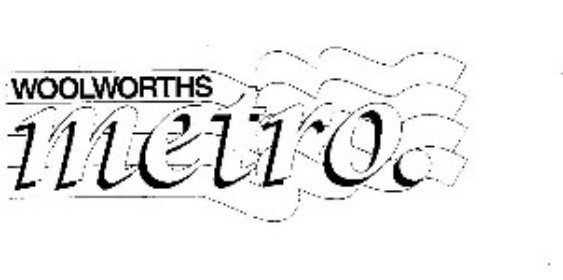
|
Caterpillar Loader Hire (Holdings) Pty Ltd v Caterpillar Tractor Co [1983] FCA 143 (‘Caterpillar’) | tractors v service, maintenance and repair of land vehicles and rental and leasing of tractors Curtains v retail and sewing of curtains (example of a relationship that Lockhart J considered closely related) | Yes | Caterpillar | Willoughby's Caterpillar Loader Hire Service |
Caesarstone Ltd v Ceramiche Caesar S.p.A. (No 2) [2018] FCA 1096 | Tiles v retail and wholesale of tiles | Yes | 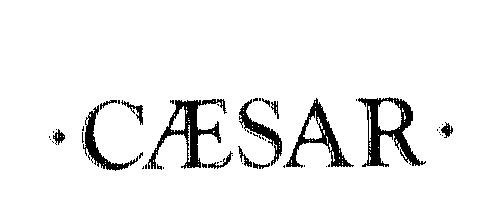
| 
|
Enagic Co Ltd v Horizons (Asia) Pty Ltd (No 3) [2021] FCA 1512 (‘Enagic') | Sales, distribution (unqualified) v Electrolytic water generators | Yes | KANGEN WATER | KANGEN |
Estee Lauder Cosmetics Limited v Warnaco Inc [2000] ATMO 103 | Perfumery, cosmetics, toiletries v Retail store services for the sale of men's, women's and children's clothing, intimate apparel and related accessories; fragrances, toiletries and related accessories; condoms and related accessories | Yes | SECRET PLEASURES | PRIVATE PLEASURES |
K-Mart Corp v Artline Furnishers Supermarkets Pty Ltd (1991) 23 IPR 149 | Furniture (all goods in class 20) v retail | Yes | K mart (various) | 
|
Conde Nast Publications Pty Ltd v Margo Pty Ltd (1994) 28 IPR 374 (Reg) | Timber lattice, trellis, fencing panels and gazebos v retail and wholesale services | Yes | VOGUE | VOGUE |
Societe Des Produits Nestle v Strasburger Enterprises Inc (1995) 31 IPR 639 | Groceries v retail services being retail convenience store services in connection with the sale of grocery items, drinks and publications, petrol, automotive supplies, paper goods and pharmaceuticals.
| Yes | QUIK, NES-QUIK 
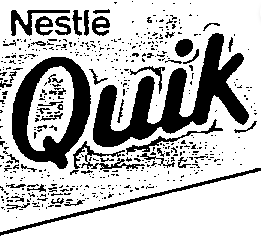
| QUIX |
Richard James Pty Ltd v Grant Olver Investments Pty Ltd [2005] ATMO 18. | Clothing v retailing and wholesaling of consumer goods, including women's clothing | Yes | 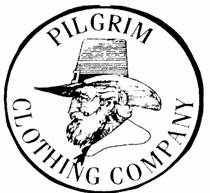
| 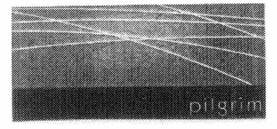
|
Potting soil, topsoil, fencing and seeds for gardening v retailing and wholesaling of plants, seedlings, garden products, plant nursery products | Yes | PLANTMARK | PLANTSMART | |
Aromas Pty Ltd (formerly Intercof Pty Ltd) v Aroma Coffee & Tea Co Pty Ltd (1997) [1997] ATMO 82 | Beverages and coffee, tea and drinking chocolate v cafe services, coffee shop services and retailing services relating to items of food and beverages
| Yes |  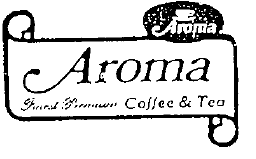
| 
|
Rowntree plc v Rollbits Pty Ltd (1988) 90 FLR 398; | Confectionery v restaurant, take-away, retail food services | Yes | 
|  
|
Discovery Holiday Parks Pty Ltd v G'day Baby Pty Ltd [2023] ATMO 4 | Clothing and accessories for children and babies v retail and wholesale of clothing
Mosquito nets v retailing and wholesaling of campers requisites | Yes | G’DAY (various)
| G’DAY BABY G’DAY KIDS |
Caltex Corporation v Y.E. Choices Merchandising SDN BHD [2000] ATMO 97 | Clothing v retail of clothing | Yes | 
| STAR MART 
|
GSM (Trademarks) Pty Ltd v Blue Eye Holdings Pty Ltd [2005] ATMO 44 | Telecommunications service packages and telecommunications equipment v retailing and wholesaling of mobile phones, accessories | Yes | BILLABONG | BILLABONG MOBILES |
Shirley Joan Smith v Lavender Lady (Australia) Pty Ltd [2007] ATMO 23 | Soaps, perfumery, essential oils, cosmetics, hair lotions v Retail store services for the sale of fragrances, toiletries and related accessories | Yes | 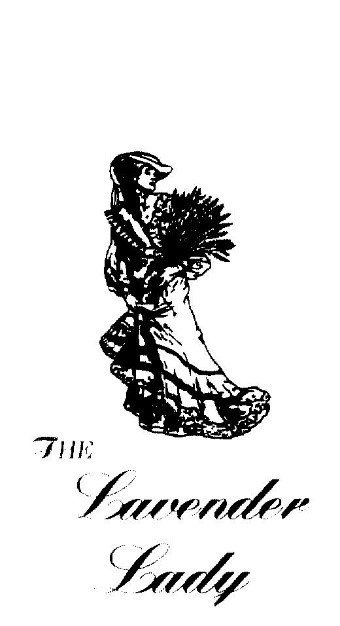
| LAVENDER LADY |
Smart Home Products Pty Ltd v Danielle Gaye Attard and Shane Edward Attard [2009] ATMO 64 | Blinds v wholesale of blinds | Yes | BISTRO BLINDS | 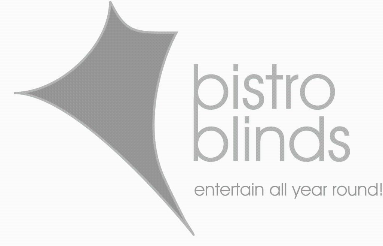
|
Stainless steel sinks, metallic pipes, Washing machines, dishwashers and drying machines, Cookers, furnaces, sinks, devices and accessories for lighting, for steam production, for cooking, for water distribution and sanitary elements v Retailing of goods (by any means); Wholesaling of goods (by any means)
| Yes | 
| 
| |
Ragopika Pty Ltd v Padmasingh Isaac trading as Aachi Spices and Foods [2023] FCA 487 (‘Ragopika') | Various food goods in classes 29 and 30 v Restaurant services; fast food outlet | No | AACHI | AACHI INDIAN CUISINE |
Qantas Airways Limited v Edwards [2016] FCA 729; 338 ALR 134 | clothing; footwear; headwear; shirts; T-shirts v merchandising services | No | 
| 
|
Richard McDonnell & Beaumont Management Services Pty Ltd v Karl Dawson [2023] ATMO 58 | Toys, including soft toys puppets, games, playthings and all other goods in this class v Wholesaling and retailing of toys, books, CD's and DVD's | No
|
PUGGLE | 
|
Ready-to-eat cereal foods made from corn, rice, wheat or bran/All goods in class 30 v Convenience store services offered at retail gasoline stations | No
| 
|
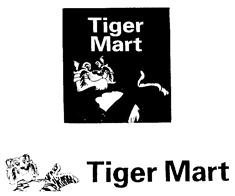
| |
Barley, oats, wheat, sorghum, maize, rye, triticale, millet, buckwheat, oilseeds, soybeans, peas, lupins, lentils, beans and other grains v resale of … agricultural products, textiles and foodstuffs, especially in offsetting transactions | No | 
| ABB | |
4.3.2 Custom manufacturing (specific) v goods
Generally, custom manufacturers provide a point to point interaction with customers that involves both the goods and the services related to them. In cases where there is a sufficient degree of similarity between trade marks claiming a good and the custom manufacture of that good, a ground for rejection is likely to be appropriate.
4.3.3 Installation, maintenance, and repair (specific) v goods
This consideration was touched on in Metro by French J at [38]
The relationships may, and perhaps in most cases will, be defined by the function of the service with respect to the goods. Services which provide for the installation, operation, maintenance or repair of goods are likely to be treated as closely related to them. Television repair services in this sense are closely related to television sets as a class of goods. A trade mark used by a television repair service which resembles (to use the language of s 10) the trade mark used on a prominent brand of television sets could be deceptively similar for suggesting an association between the provider of the service and the manufacturer of the sets.
In cases where there is a sufficient degree of similarity between trade marks claiming a good and the repair, maintenance, and repair of that good, a ground for rejection is likely to be appropriate.
4.3.4 Software vs a given service
The question of whether software applications and services are closely related will depend on the nature of the service and the function of the application. In some industries, software applications have come to be used so extensively that they essentially are the vehicle through which a service is accessed, or used to such an extent that the line between where the goods end and the services begin has been blurred (Acorn Capital Ltd v Acorns Grow Inc [2021] ATMO 21). If research supports that consumers will expect a software application to share a trade source with the provider of the service itself, the risk of confusion between the software and the service is more likely. Examples such as financial services vs apps for financial services, dating services vs dating software, or accommodation booking services vs software for booking accommodation may present a higher risk of confusion.
Relevant factors include the level of integration between the software and the provision of the services, as well as the expectations of the target consumer. It is important to note that just because a service can be accessed or promoted via an app does not in itself render software and the service closely related.
As mentioned in Part 26.4.3, French J’s comments in Metro at [40] regarding ‘one practical judgement’ must also be taken into account. The potential for confusion will be reduced where the trade marks are merely deceptively similar, and where the differences between the respective trade marks and goods/services, when considered as a whole (i.e. making one practical judgement), renders confusion unlikely.
4.4 Notional Use
Notional use refers to the assumption that a trade mark will be used in a normal and fair manner for all the goods and/or services covered by the application or registration. When comparing goods or services of two trade marks to determine whether they are similar or closely related, the examiner cannot take into account what each trade mark is actually used for (where the examiner has knowledge of such facts).
In Re Smith Hayden and Co’s Application (1946) 63 RPC 97, Evershed J said at 101:
Assuming a use by the proprietor of each of the cited trade marks in a normal and fair manner in respect of any of the goods and services covered by those registrations, is the court satisfied that there will be no reasonable likelihood of deception and confusion amongst a substantial number of persons if the applicant for registration (the respondent to this application) also uses its mark normally and fairly in respect of services covered by the proposed registration.
(note that this case refers to a court being satisfied there will be no likelihood of deception or confusion. However, a presumption of registrability applies to s 44, meaning that an examiner must be satisfised there will be deception or confusion).
Regard must be given to any goods and services that could reasonably be expected to fall within the goods and services specified in the application or registration. In assessing the similarity of goods and services, specifications should be considered in a “normal and fair manner” as noted above. The terminology in claims is therefore important in determining the scope of a particular application/registration. For example, broad claims such as ‘computer software’ or ‘retail services’ must be interpreted to include computer software for any purpose, or retail services relating to any goods.
Amended Reasons
| Amended Reason | Date Amended |
|---|---|
Accessibility fix - remove empty headings |
|
Content added - 4.3.4 Software vs a given service |
|
Content updated. See page for details. |
|
Update hyperlinks |
|
Approved. |
